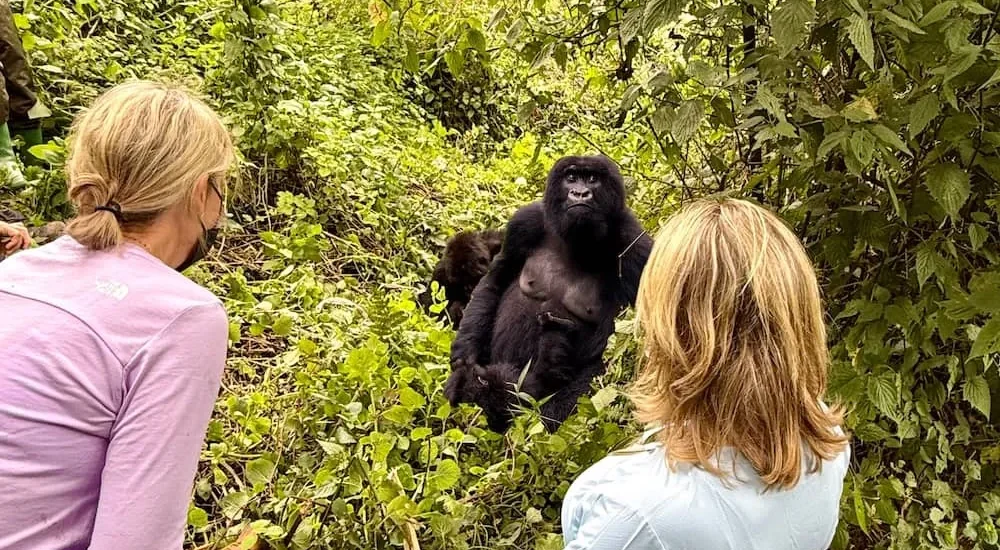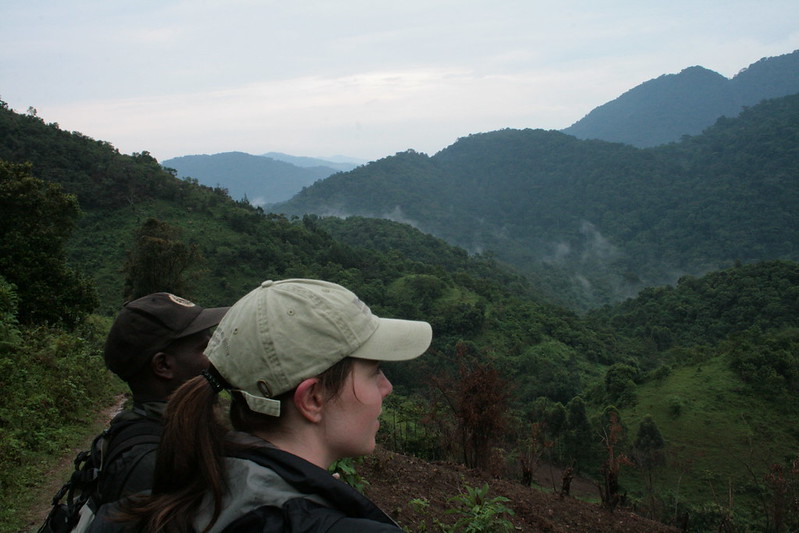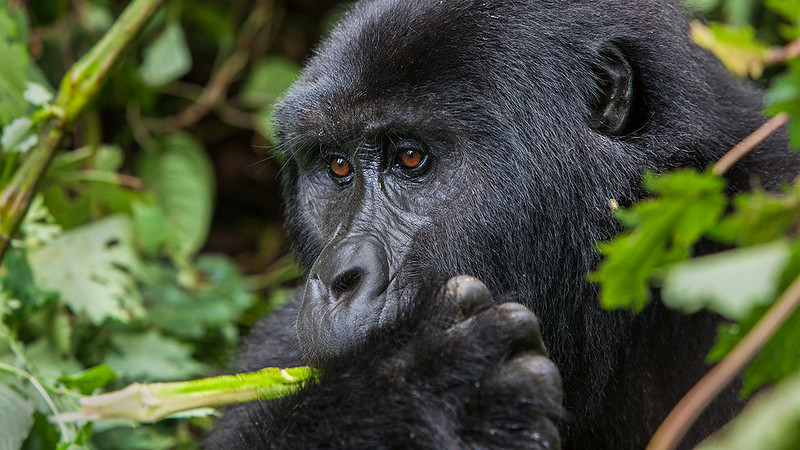Gorilla Trekking Altitude Acclimatization and Elevation, Any visitor who has been gorilla trekking has a…
The African Big 5 Animals
The African Big 5 Animals
The African safari’s Big Five – Africa’s Big Five
Africa’s Big 5: Lions, Leopards, Elephants, Buffaloes, and Rhinos
The Africa’s big five animals are the lion, tiger, rhino, leopard, and buffalo, and they are the primary attractions of an African safari. The safari sector is based on word of mouth, which makes its accessibility a simple tool for attracting tourists, five amazing safaris, Africa Big 5, Visit the five major ones. Nonetheless, the term carries a negative connotation because these five large ones were the most renowned awards.
In fact, it streamlines safari for five distinct species. These five are the highlights of a safari, yet with such a focus on the Big Five, Africa is gradually losing its variety. 5 out of hundreds. This is number five. The great five are undoubtedly significant and remarkable, but they should not be the primary motivation for visiting Africa.

Is the Big Five Concept Outdated?
During most game safaris, you are guided by rangers or safari guides who will locate the animals for you. The guide gestures to distant trees and at some point notice a tail waving you need to use binoculars to help in clear views of the distant and unclear animals hiding along the thick bush and dark most times without direct sunlight penetrating through. Or you can catch a glimpse of a woodland that isn’t always clear.
Someone may overpower you with what they have seen, so you will be obliged to stare directly in the same direction for a very long time, all in vain, because it is perhaps an overhanging fig branch that you waste ten minutes seeking for and concluding with.
In the big five problems, the leopard is the final sight, and you are already dreaming about the stories you have heard about the big five wild animals in books or on other websites. The full five is the de facto privilege of an African safari to view big cats triumph for every individual on safari in Africa. It’s all over now. Consider the far leopard, which might be difficult to notice in comparison to other creatures such as the cheetah.
The five large beasts have a remarkable appearance. These are among the most stunning creatures to be seen, and seeing them up close will be an unforgettable part of your safari experience. There will undoubtedly be a number of popular national parks that contain all five of the Big Five. However, hunting for and attempting to check the mark detracts from the safari’s allure. In some ways, it’s an antiquated idea from another era. However, it is the alluring attraction that catches the imagination. Wolf, tigers, bears, leopards, and rhinos are among the creatures that everyone wishes to encounter.
The Africa Big Five’s Malevolent History
The Africa Big Five wild game is a pre-safari concept that refers to the five most difficult creatures to hunt. Some African hunters considered these to be the most difficult animals to hunt. These five species were traditionally the last hunting trophies since only these animals will battle when pursued. Every other species is going to flee. Even though there was little chance of a 4-ton elephant facing a bullet pistol, the big five beasts would charge and not flee.
Furthermore, when the veterinarian got to work, hanging his head on a wall, the big five were the most striking. Colonial nobility traveled to Africa in pursuit of the whole collection, aided by gangs of servants who trampled only when a shooting weapon was fired.
During the last few decades, Africa’s big five games were primarily hunted for trophies, and poaching was on the rise in several national parks because these animals were highly valued and in high demand, but now, the big five wild games have become the most vulnerable and highly desired safari animals that every traveler visiting national parks for game viewing should not miss during their safari visits. And have become one of the endangered animal species that require special care. They constitute the centerpiece of many East African safaris.

Why is the Africa Big 5 Important to the Safari Industry?
This phrase has never been forgotten since the days when poaching of these creatures was common and the animal remains were in great demand. As hunting declined and tourism replaced the uncontrolled slaughter of animals, the big five came to represent the best views, and the animals are now in high demand during any safari visit in different national parks. It has developed into a tangible magnet that has lately been enhanced as a marketing tool. As the safari sector grows, the five big ones are sold and grow in importance.
Visitors are drawn in by the wide five guarantees, and the number of gasoline-protected parks and reserves is growing. What more might this unparalleled potential bring? Limited private gaming reserves are especially interested in ensuring that each of the five large ones contains one or two species.
Mammals are being reintroduced into national parks in order to enhance the number of animals living in the forest and hence strengthen the tourist economy and tourism activities available in various national parks. The term “big five” refers to significant accomplishments and developments in the tourist sector. Exotic and mythical, elegant, yet defined by the vastness of their natural habitat, mysterious animals’ thoughts. You have a decent chance of seeing the five major wild animals no matter how many times you have been on safari, whether it is your first or tenth safari.
Why are the Africa Big Five so revered?
Without a doubt, the wide Africa Big Five are frequently the centerpiece of an African safari, notwithstanding marketing approaches. The male alpha quality for his magnificent lionesses is the sight of a lion’s mane flickering in sunset colors. Buffalos have powerful stars and jaws that continually chew and churn as they face you. Today, a rhino shines gracefully from its gradual journey through the safari, horns with grace points, elephants traveling across a vast disturbed plateau, and loose and musical tracks in perfect harmony. The Leopard is one of the fiercest hunters, hidden in the wild.
See the creatures up close through their photographs, which become the most memorable encounters many years afterward. It doesn’t mean they’re any less outstanding because they’ve been highly pushed. It’s not a ruse. You’re relieved to see one of the big five. And those admired photographs depicted African safari fantasies.
Thoughts inflame such popular personalities, and the top five of them are quite crucial for that. Fewer people would be interested in an African safari if they and the term “big five” were not used. But are these truly the highlights of a safari? Looking at the gorillas after the major five viewers have seen them, they are also endangered and famously visited primates, although they are not among the big five wild wildlife.
It is frequently tough to stay away from How the Africa Big Five Can Simplify the Safari Experience, especially when it is the first time on the safari. If you are planning a trip to Africa and want to see certain animal species, you should probably put the five major wild games on your list of animals to visit. Finally, when you’re out on safari, folks will be wondering if you spotted the five big beasts. Most of you would assume that the five creatures had been recognized. But what does that truly mean?
Though you may believe you have spotted a leopard, you may have simply seen a fig tree in the distance disguised as a leopard; also, rhinos are large creatures and you may have mistaken a boulder for a leopard. These are the unexpected moments, the personal times when you might witness the perfect safari memories. That might be a significant present one or more days. It might also be something entirely else. A cheetah might run to an impala, a zebra newborn pair, or a dangerous plunge from the water.
It is missed while focusing on the five major ones. There may be disappointment in not being able to experience the meaning of your safari since one of the elite lists was missing or you missed seeing one of the big five wildlife. Seeing a leopard on a faraway tree is not the same as seeing a leopard chase. A faraway elephant may teach you a lot of things at times. However, walking with a peaceful little herd of 30 elephants crossing just meters away from your safari is unparalleled. The question is if the big five animals are heavily grafted into a client via marketing.
The emphasis is on a checklist rather than the overall quality of the safari vacation. It turns the abstract into the objective, and it’s not about an African safari. The finest moments are in the indelible pieces of sentences or pictures that are tough to identify. These are the feelings associated with the interspecies relationship.
Focusing on the big five decreases perceptions of quality and quantity. For example, you are unlikely to encounter the big five in Botswana’s Chobe National Park. Nonetheless, around 100,000 elephants remain in the reserve. The entire assortment is likewise hard to find in Namibia’s Etosha National Park.
However, when contrasted to the sight of lions and hippos confronting one other in a burnt water hole, this is the best chance to see the animals, and several large renowned rhinos are absent. However, when comparing these large national parks to a tiny private forest, the variety of their other species varies greatly from one national park to the next or from a private reserve to a national park. As a result, in order to understand the diverse environment, you will need to visit numerous places because they both provide unique experiences.
![]()
The Big Seven and the Little Five
As an example, environmental conservation has begun to support the big five game, intriguing and charming species that highlight the diversity of the African countryside. Each of them is wildly contradictory and keeps a portion of their given name. A leopard tortoise, named for the cock with the same markings as the automobile, a little lion, and a rhino-beetle, which is sometimes ignored. The aim of the safari is not those little creatures that are the major reason for the safari, however, they do contribute to making the safari more exciting and entertaining.
Then there’s the shrew-like elephant, a buffalo weaver, and many bird species with distinct nests spotted on grassland and on top of trees. Marketers, on the other hand, have begun to phase out the five big five species and are now introducing the big seven largest creatures, five of which are situated in South Africa’s south, followed by whales and sharks.
East African safari firms have also contributed to the intriguing list. Chimpanzees and gorillas have also made significant contributions to tourist development, becoming some of the most popular primates in East African nations such as Uganda and Rwanda. Gorilla trekking, followed by chimp trekking, is one of the most popular tourism activities currently entertaining visitors in national parks.
The Big Five as a Conservation Tool
Surprisingly, what began as a hunting term for the big five has now evolved into an environmental conservation expectation that must be safeguarded. Several extinct species have been reintroduced into national parks and reserves.
These magnificent African icons have been conserved through tremendous work and finance. Rhinos, for instance, are now far more common in reserves than they were five years ago. The Big Five are so popular that they are crucial for the tourism industry and stimulate conservation efforts across the continent.
On an African safari, including rehabilitation programs and reintroduced species, there have been a lot of outstanding successes in a variety of activities, which have considerably enhanced the tourist sector and the conservation of endangered animals from widespread slaughter and poaching.
A New Phrase to Compete with the Big Five
It is difficult to dispute that the animals survived the brutal effects of a hunter who posed a threat to the lives of forest creatures. Alternative terms cannot compete with the Big Five’s attractive beauty. How do you explain the large number of creatures found in the rare and diversified ecosystems of Africa’s pristine habitats? The continent-wide ubiquity of those two wonderful phrases is unparalleled. While the big five are an old notion, the safari vernacular is unlikely to disappear in the near future.
It also refers to the source of safari; focusing solely on the Big Five seeks to provide experiences similar to being in a zoo, roaming around in the forest with enormous creatures living in the forest. However, the most significant aspect of the safari is the environment you explore and the various sights you encounter, which provide you with a comprehensive safari experience. No two safaris are the same, no matter how frequently you do them, therefore no matter how many times you visit the nation, the experience is not the same. Despite being in the same location, you will constantly get the sense of two or more safaris.
When planning a “long trip,” the sensation transfers the focus away from your encounters and onto awaited sights. Those assumptions are kept, but the mind begins to construct visions of how the safari will be and what you may anticipate seeing.
Safaris are private and intimate, not simply the same pictures and sights as everyone else. The safari is viewed as a journey, and the thrill is palpable when you eventually witness the big five wildlife and numerous other animal species that live in the park. The safari experience influences how enjoyable the trip was for you.


